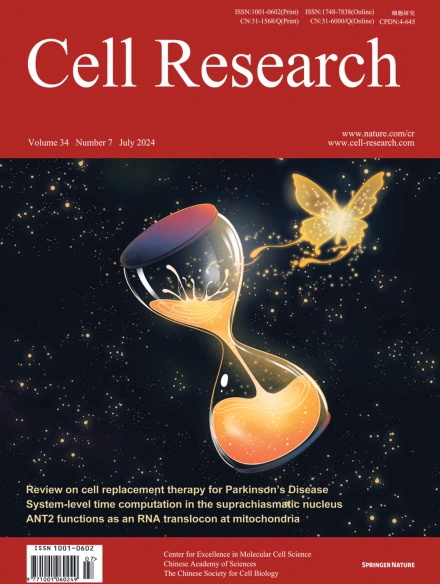
Advanced Search
Submit Manuscript
Advanced Search
Submit Manuscript
Volume 34, No 7, Jul 2024
ISSN: 1001-0602
EISSN: 1748-7838 2018
impact factor 17.848*
(Clarivate Analytics, 2019)
Volume 34 Issue 7, July 2024: 493-503 |
System-level time computation and representation in the suprachiasmatic nucleus revealed by large-scale calcium imaging and machine learning
Zichen Wang1,2,† , Jing Yu1,2,† , Muyue Zhai1 , Zehua Wang3,4 , Kaiwen Sheng5,8 , Yu Zhu5 , Tianyu Wang1 , Mianzhi Liu1 , Lu Wang1 , Miao Yan1 , Jue Zhang4,6 , Ying Xu7 , Xianhua Wang1,2 , Lei Ma1,5,* , Wei Hu3,* , Heping Cheng1,2,*
1National Biomedical Imaging Center, State Key Laboratory of Membrane Biology, Institute of Molecular Medicine, Peking-Tsinghua Center for Life Sciences, College of Future Technology, Peking University, Beijing, ChinaThe suprachiasmatic nucleus (SCN) is the mammalian central circadian pacemaker with heterogeneous neurons acting in concert while each neuron harbors a self-sustained molecular clockwork. Nevertheless, how system-level SCN signals encode time of the day remains enigmatic. Here we show that population-level Ca2+ signals predict hourly time, via a group decision-making mechanism coupled with a spatially modular time feature representation in the SCN. Specifically, we developed a high-speed dual-view two-photon microscope for volumetric Ca2+ imaging of up to 9000 GABAergic neurons in adult SCN slices, and leveraged machine learning methods to capture emergent properties from multiscale Ca2+ signals as a whole. We achieved hourly time prediction by polling random cohorts of SCN neurons, reaching 99.0% accuracy at a cohort size of 900. Further, we revealed that functional neuron subtypes identified by contrastive learning tend to aggregate separately in the SCN space, giving rise to bilaterally symmetrical ripple-like modular patterns. Individual modules represent distinctive time features, such that a module-specifically learned time predictor can also accurately decode hourly time from random polling of the same module. These findings open a new paradigm in deciphering the design principle of the biological clock at the system level.
https://doi.org/10.1038/s41422-024-00956-x